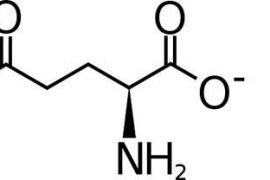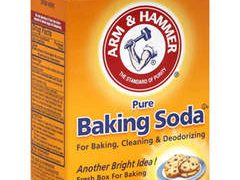The fact that toxic exposures will influence your risk for disease and early death should come as no surprise. According to the World Health Organization (WHO), toxic environments are responsible for at least 1 of every 4 deaths reported worldwide.1 Recent research2also reveals the greater your total pollution exposure, the higher your risk for cancer. As reported by Reuters:3
“While … previous research has linked individual pollutants to increased risks of specific types of cancer, the current study focused on how the combined effect of exposure to a variety of environmental contaminants may influence the risk of tumors …
Compared to counties with the highest environmental quality, counties that ranked the lowest had an average of 39 more cancer cases each year for every 100,000 residents. ‘We do not experience exposures in a vacuum but rather are exposed to several exposures at any one time,’ said lead study author Jyotsna Jagai, [Ph.D.,] of the University of Illinois at Chicago.
‘We considered a broad definition of environmental exposures, which included pollution in the air, water, and land and also (man-made) and sociodemographic environmental factors … We found that counties with poor overall environmental quality experienced higher cancer incidence than those counties with good overall environmental quality’ … Prostate and breast tumors were strongly associated with environmental quality …”
Four Major Sources of Toxic Pollution in Your Home
According to Dr. Lee Cowden, a board-certified interventional cardiologist who has developed an exceptional teaching program for the Academy of Comprehensive Integrative Medicine (ACIM), more people die from cancer treatment than from cancer itself.
He may well be correct, considering how toxic most conventional cancer treatments are. Without a doubt, an ounce of prevention is worth a pound of cure when it comes to cancer, and cleaning up your living space can go a long way toward lowering your toxic burden. While the sources of environmental pollution are many, four major sources of toxic exposure in your home are:
- Indoor air pollution
- Contaminated water
- Toxic lawn care
- Flame retardant furnishings
Beware of Toxic Dust
Indoor air pollution is thought to be one of the greatest hazards. According to WHO, 92 percent of the world’s population is breathing polluted air,4 and the U.S. Environmental Protection Agency (EPA) has warned that poor indoor air quality is one of the top public health risks.
In fact, studies demonstrate that indoor pollution levels may be two to five times higher than outdoor levels,5 and poor air quality can cause serious damage to your lungs, heart and other organ systems. The materials found in your home are often a significant contributor to poor indoor air quality. Flame retardant chemicals, for example, commonly found in furniture and carpeting, do not remain inertly bonded within the foam or fabric. They escape in the form of dust.
One study6 found every dust sample collected from American homes contained Tris phosphate (TDCIPP) and triphenyl phosphate (TPHP); 91 percent of urine samples from the residents also contained metabolites of TDCIPP, and 83 percent had metabolites of TPHP.
Other tests have also shown that 90 percent of Americans have flame-retardant chemicals in their bodies, and many have six or more types in their system.7 Disturbingly, children have been found to have levels of flame retardants that are as much as five times higher than their mothers’.8
How to Remediate Poor Air Quality
Considering how impure the air is in most homes, you’d be well-advised to implement one or more remediation strategies. Following are a handful of basic suggestions.9 For even more tips on how to reduce indoor air pollution, as well as the different air purifier technologies available, see this previous air quality article.
|
Regularly ventilate your home This recommendation is virtually free. All you need to do is open up windows on opposite sides of your home for five to 10 minutes every day to cross ventilate. This will go a long way to help radically reduce your indoor air pollution |
|
Install a HEPA filter in your HVAC system and upgrade your furnace filters Be sure to change the A/C filter every three months, or earlier if dirty, and have your furnace and air conditioning ductwork and chimney cleaned regularly |
|
Use a high-quality air purifier and keep it running 24/7 Avoid keeping air purifiers on the floor to avoid stirring up dust. Ionizing air purifiers generate negative ions that attract and trap dust and allergens. Just make sure your system is suitable for the size of your space. Using too-powerful a system for a small space can lead to excessive ozone buildup, which may do more harm than good. Ozone levels up to 0.05 ppm are safe, according to the U.S. Food and Drug Administration.10 When it comes to air purifiers, as long as they limit ozone levels in your home to between 0.02 and 0.04 ppm, they offer great health benefits, without any the negative effects |
|
Avoid as many household chemicals as possible For example, ditch carpet fresheners, air fresheners and chemical cleaning supplies, and replace them with nontoxic versions. Many cleaning products can be replaced with baking soda, vinegar, hydrogen peroxide, water and mild soap. For a fresh scent, use a high-quality essential oil, which can be used in a diffuser or added to your cleaning solution |
|
Add live plants Studies have demonstrated that plants can improve your indoor air quality,11 removing pollutants by absorbing them through their leaves and roots. Most leafy plants are adept at removing some pollution from your indoor air, but some are better at removing volatile organic compounds (VOCs).12 Among the most beneficial houseplants, based on their ability to clean air and remove VOCs, are jade plant, spider plant, scarlet start, Caribbean tree cactus, dracaena, ferns, peace lily, English ivy, ficus, snake plant, philodendron and bamboo palm13,14 |
|
Consider taking a vitamin B complex Recent research suggests B vitamins can help protect against air pollution.15,16,17 At high doses, B vitamins were actually able to “completely offset” damage incurred by fine particulate matter. In this study, participants received a daily supplement of 2.5 milligrams (mg) of folic acid (B9), 50 mg of vitamin B6 and 1 mg of B12 for four weeks. At these high levels, the vitamins reduced genetic damage by as much as 76 percent, and protected mitochondrial DNA from the harmful effects of very fine particulate matter |
Water Filtration Is Necessary in Most Homes
Drinking water contamination is also widespread, both among those with community water and private wells,18 and aging water pipes add to the toxic exposure.19
The list of potential water contaminants is long, ranging from agricultural chemicals like nitrates — runoff from factory farms — and drugs, to fluoride, arsenic,20,21 mercury, lead,22 PFCs (firefighting foam is a major source) and perchlorate (an ingredient in rocket fuel).23
The chemicals used in water treatment, such as chlorine and chloramine, also create highly toxic disinfection byproducts (DBPs). Chemicals from perfume, cologne, lotions, sunscreens and medicated creams24 also add to the contamination problem, and old worn-out pipes deposit lead, copper and harmful bacteria into many people’s homes.
Since most water sources are severely contaminated, filtering water prior to use is more of a necessity than a luxury these days. If you have well water, it is prudent to have it tested for contaminants. You can get local drinking water quality reports for public water supplies from the EPA.25
Ideally, your best bet is to filter the water at both the point of entry into your home and the point of use. This means installing filters where water enters your home and again at your kitchen sink and showers. A whole-house water filter will last you about three years, costing you roughly $1 per day — a worthwhile investment, all things considered.
If your water is from a municipal source, it may even affect your indoor air quality, courtesy of evaporating chlorine from toilets, showers, baths, dishwashers and washing machines.
Evaporated chlorine forms chloroform gas and chlorine vapors that may increase your risk of asthma, airway inflammation and respiratory allergies. Open your windows for five to 10 minutes each day to help remove these gasses and improve your indoor air quality.
One of the best water filters I’ve found so far is the Pure & Clear Whole House Water Filtration System, which uses a three-stage filtration process — a micron sediment pre-filter, a KDF water filter and a high-grade carbon water filter26 — to filter out chlorine, detergent byproducts and other contaminants.
Are Your Lawn and Garden Toxic?
Seventy-eight million American households rely on commercial pesticides for their home and garden,27 and homeowners use 10 times more chemicals per acre than farmers do.28
Ninety million pounds of herbicides alone are being applied to private lawns and gardens each year. Roundup — the toxic effects of which are now becoming more widely known — is still one of the most widely used herbicides. However, there are several others that are just as bad, including 2,4-D, found in many “weed and feed” formulas. As reported by KCET:29
“While farm use accounts for the majority of the poundage of 2,4-D used in the U.S., it’s in home lawns and gardens that the herbicide is applied most heavily … In several studies, 2,4-D was the most common herbicide found in suburban areas, and other studies have detected the herbicide in two-thirds of interior air samples taken from households …
On its own, 2,4-D exposure has been linked … to … cancers, genetic damage, hormonal and immune system dysfunctions, and the usual range of pesticide-related irritations of skin, eyes and lungs.
The National Institute on Occupational Safety and Health (NIOSH) lists several formulations of 2,4-D as known mutagens … [A]cute exposure to 2,4-D causes neurological problems, raising concerns that low-level, chronic exposure may do likewise.”
Like glyphosate (the active ingredient in Roundup), 2,4-D has been classified as a possible human carcinogen by the International Agency for Research on Cancer, a division of WHO, primarily due to its ability to cause genetic damage. In animals, the herbicide has been linked to low sperm count, male reproductive damage, reduced litter size and cancer.
Rather than struggling to maintain a pristine lawn and placing the health of your family and pets at risk with toxic garden chemicals, consider transitioning over to edible landscaping and organic gardening.
If you’re planting trees for shade, there are many fruit and nut trees30 that can do the job, serving double duty by producing food as well. For suggestions, see Help Yourself! website at commongreen.weebly.com.31 While you’re at it, you can be an environmental steward by creating an oasis for pollinators. The Honeybee Conservancy has helpful guidance on creating a bee-friendly garden.32
Weed Out the Flame Retardants
The fourth major household source of toxic exposures are flame retardants, which can be found in all sorts of household goods and furnishings. The most comprehensive recommendation is to opt for organic or “green” alternatives no matter what product is under consideration, be it carpeting, furniture, drapes or mattresses.
Since most mattresses are treated with flame retardant chemicals and you spend one-third of your life sleeping, your bedroom can be a significant source of toxic exposure.
I recommend looking for a mattress made of either 100 percent organic wool, which is naturally flame-resistant, 100 percent organic cotton or flannel or Kevlar fibers (Stearns and Foster is one brand that sells this type of mattress). There are a number of good options on the market.
I’ve also put together an assortment of wool and silk bedding, including organic cotton and wool mattresses you can choose from when it comes time to replace your mattress, pillows and comforters with toxin-free versions. This is the one that I personally use to sleep on in my own home.
Other pieces of furniture filled with cotton, wool or polyester will also be safer than chemical-treated foam; some products also state that they are “flame-retardant free.”
Be particularly cautious with polyurethane foam products manufactured prior to 2005, as they’re likely to contain now-banned polybrominated diphenyl ether (PBDE). Carefully inspect such items and replace ripped covers and/or any foam that appears to be breaking down. Also, avoid reupholstering furniture by yourself as the reupholstering process increases your risk of exposure.
Older carpet padding is another major source of PBDEs, so take precautions when removing old carpet. You’ll want to isolate your work area from the rest of your house to avoid spreading it around, and use a HEPA filter vacuum to clean up.
If in doubt, you can have a sample of your polyurethane foam cushions tested for free by scientists at Duke University’s Superfund Research Center.33 This is particularly useful for items you already have around your home, as it will help you determine which harmful products need replacing.
Lowering Your Toxic Burden Begins at Home
Most of us are exposed to toxic chemicals no matter where we live these days, and many of these environmental exposures we have no control over. Your home, however, is one exception. Here, you actually have a great deal of control — far more so than outdoors, in public spaces and at work.
Considering about half your life or more is spent at home, addressing toxic exposures here can go a long way toward reducing your toxic burden, thereby reducing your risk of cancer and other chronic disease. Granted, I’ve not covered all possible sources in this short article. Entire books could be written on that. But by addressing your air quality, water quality, lawn and garden care and your furnishings, you’ve covered significant ground.
Learn more about toxins in the home:








